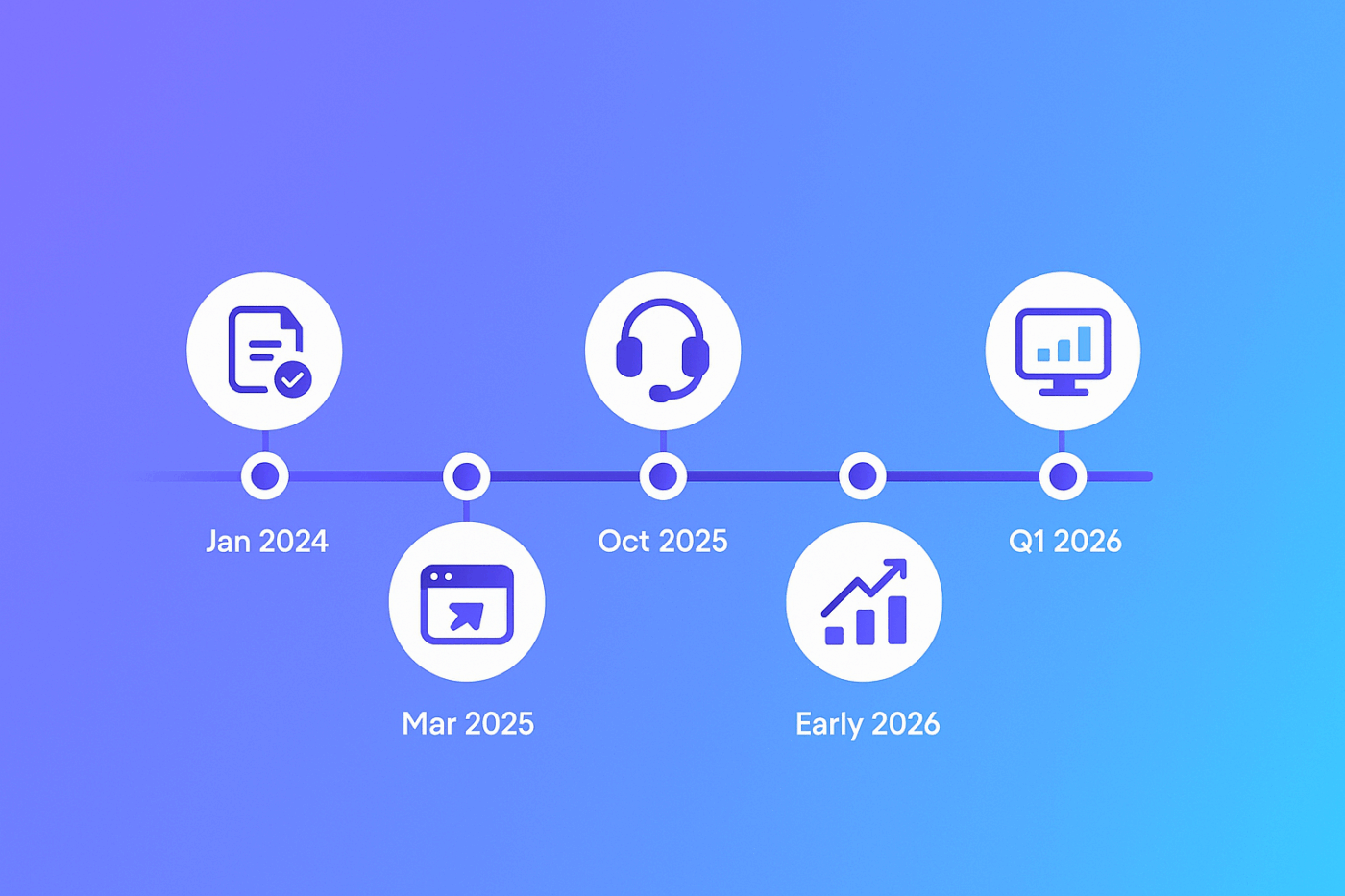How Zendesk Agentic AI Resolves Tickets Without Humans

Sorry, there were no results found for “”
Sorry, there were no results found for “”
Sorry, there were no results found for “”
Oct 31, 2025
8min read
Yes, Zendesk offers agentic AI through its Resolution Platform, which the company unveiled at the Relate 2025 conference in Las Vegas on March 26, 2025.
The platform deploys autonomous AI agents that resolve customer inquiries from start to finish without routing every question to a human agent.
What sets Zendesk apart is its outcome-based pricing model, making it the only major service software provider to charge customers per successfully resolved issue rather than per interaction or seat.
Early adopters have seen impressive results, reporting three times more instant resolutions and roughly 30 percent faster overall resolution times – an approach that shifts risk from the buyer to the vendor, which is rare in enterprise SaaS.
The Resolution Platform integrates five core components: AI Agents, a Knowledge Graph, Actions and Integrations, Governance and Control, and Measurement and Insights. Together, these elements ensure every inquiry finds a clear path to resolution.
This architecture is significant because it connects AI decision-making directly to real business systems, allowing agents to execute tasks like refunding orders or updating shipping addresses instead of merely suggesting answers.
Zendesk’s Resolution Platform operates as a continuous feedback loop.
When a support request arrives through any channel, the AI agent reads the message, pulls customer context, and queries the Knowledge Graph for relevant policies, past tickets, and product documentation.
The platform integrates five core components:
| Component | Business Function |
|---|---|
| AI Agents | Autonomous issue resolution |
| Knowledge Graph | Unified context from all enterprise data sources |
| Actions and Integrations | Task execution across external systems |
| Governance and Control | Policy enforcement, audit trails, data privacy |
| Measurement and Insights | Real-time performance analytics |
The agent evaluates whether it can resolve the issue autonomously.
For straightforward cases, it executes the fix directly through Actions and Integrations, calling APIs to process refunds, update CRM records, or modify shipping addresses.
Governance and Control layers enforce company policies, mask sensitive data, and log every decision, while Measurement and Insights track resolution rates and satisfaction scores in real time.
This architecture solves the black-box problem that plagued earlier chatbots. Admins can trace exactly which knowledge article or business rule triggered each decision and adjust reasoning parameters when priorities shift.
The platform scales horizontally through no-code builders, letting teams add new integrations or knowledge sources in minutes rather than weeks of custom development.
Picture a SeatGeek fan messaging support at 11 p.m. asking, “Where are my tickets?”, a common problem that would previously require a live person to help solve.
The AI agent instantly pulls order history, confirms payment cleared, and locates the ticket delivery email that landed in spam. Within 20 seconds the agent resends the tickets, updates the user’s preferences to whitelist future messages, and closes the case with a satisfaction survey. No human ever touched that interaction.

The typical journey unfolds in four stages:
SeatGeek achieved 51 percent auto-resolution within four months of deploying Zendesk Agentic AI, handling 57,000 queries autonomously during peak event windows. That scale frees human agents to tackle nuanced complaints and build relationships, rather than repeating password resets.
The efficiency gap between Zendesk and legacy helpdesk software widens further when you examine what makes the platform distinct.
Zendesk separates itself from other agentic AI platforms through outcome-based pricing and deep platform integration. Most competitors charge per agent seat or per conversation, which penalizes high ticket volumes and creates misaligned incentives.
Zendesk flips that model: you pay roughly 20 to 30 cents only when an AI agent fully resolves a case, so unresolved interactions cost nothing. That structure rewards accuracy and pushes Zendesk to continuously improve its models.
The company also bundles AI Agents, Co-Pilot tools for human agents, and the Resolution Platform into a unified suite, eliminating the integration headaches that plague multi-vendor stacks.
Key strengths include:
Trade-offs exist, and early user feedback reveals where expectations meet reality.
Some admins found the Agent Builder interface clunky, requiring steeper training than anticipated. One Reddit user called it “the most annoying interface in the world,” noting the absence of one-click AI draft features seen in competing tools.
Zendesk has iterated on the UI since launch, but buyers should budget for onboarding time.
The platform also relies heavily on well-curated knowledge bases. One tech-savvy commenter admitted their company’s documentation wasn’t perfectly maintained, and the AI struggled until they added Knowledge Connectors to pull in external content.
That dependency becomes less onerous once you understand how the ecosystem plugs into surrounding systems, but it’s worth noting upfront.
Despite these friction points, sentiment has shifted positive as the platform matures. Zendesk reseller partners defend the pricing aggressively, reporting that Co-Pilot features delivered 20 to 30 percent efficiency gains per user in practice.
Their argument makes sense: for a support agent costing roughly $2,000 per month, a $50 AI assist license pays for itself several times over through faster replies and higher customer satisfaction. As one partner put it, “a steal if it’s delivering 30 percent value per agent.”
Authentication issues for knowledge base articles behind login walls initially frustrated users, but Zendesk added native support for secured content and smoothed that pain point.
These iterative fixes signal responsiveness to feedback, and the company continues refining the experience along a public roadmap.
Zendesk Agentic AI connects to enterprise workflows through three mechanisms: pre-built connectors, no-code orchestration, and open APIs.
Action Builder ships with ready-made links to popular apps, so AI agents can create Jira tickets, post Slack alerts, or sync Salesforce records without custom code.
Upcoming connectors extend into business platforms like Shopify and Microsoft Teams, letting agents handle order modifications and internal IT requests from a single interface.
Knowledge Connectors allow the AI to tap external content repositories such as Confluence wikis, Google Drive folders, and SharePoint sites, unifying context across disparate knowledge bases without data migration.
| Platform | Integration Role |
|---|---|
| Slack | Instant notifications and two-way command execution |
| Jira | Automated ticket creation and status updates |
| Salesforce | CRM sync for customer records and case history |
| Microsoft 365 | Access to Teams chat, Outlook calendar, Excel reports |
| Google Drive | Live document retrieval for knowledge queries |
| AWS Telephony | Cloud-based voice routing and call transcription |
For deeper customization, Integration Builder provides a no-code API orchestrator that calls any external REST endpoint or database from an AI agent step.
App Builder goes even further than that, enabling teams to create custom UI widgets within Zendesk using natural language prompts, then deploy those apps internally or share them via the Zendesk Marketplace.
This three-tier approach balances speed for common use cases with flexibility for specialized workflows.
The smartest way to roll out Zendesk’s agentic AI is to start small and prove value before going wide.
We suggest you pick one high-volume, low-complexity issue, something like password resets or order status lookups, and run a pilot for four to six weeks.
Track resolution accuracy, escalation rates, and customer satisfaction against your current human-only baseline. Once the numbers prove the AI can handle it, expand to more issue types.
Here’s how most successful rollouts unfold:
You’ll need buy-in from multiple teams to pull this off. Support managers set the escalation rules, IT handles the integrations, and compliance keeps tabs on data handling.
Zendesk pushes hard on having one dedicated project lead who can cut through the cross-functional noise and keep things moving when priorities clash.
Zendesk’s evolution centers on deeper automation, expanded channel coverage, and advanced analytics.
The company has steadily added capabilities since the platform’s March 2025 debut, with major milestones planned through 2026 and beyond.

Voice AI Agents represent the next frontier. Following the October 2025 beta, fully autonomous phone support agents will reach general availability in early 2026, powered by GPT-4 and GPT-5 models that converse naturally, execute actions, and resolve issues without live agent escalation.
The July 2025 acquisition of HyperArc fast-tracked conversational analytics into the roadmap: admins will soon ask questions in plain English and receive instant insights from support data, complete with AI-driven trend analysis and anomaly detection.
A Microsoft 365 Teams and Outlook integration is launching soon to embed Zendesk AI support directly into employees’ daily tools, blurring the line between customer and employee service.
These roadmap commitments position Zendesk to compete with Salesforce and ServiceNow on autonomous agent capabilities while maintaining easier deployment and measurable outcomes as differentiators.
Zendesk’s pricing model stacks three layers: outcome-based AI resolution fees, optional agent productivity add-ons, and base platform subscriptions.
Customers pay approximately $0.20 to $0.30 per ticket that an AI agent successfully resolves end to end, meaning unresolved interactions incur no AI charge. That outcome-based billing aligns cost with tangible value and reduces risk for buyers testing the technology.
The Advanced AI add-on, which delivers Co-Pilot features like auto-summaries, tone adjustment, and answer recommendations for human agents, costs $50 per agent per month.

Volume discounts through Zendesk partners often lower that rate, and trials have shown a 20 to 30 percent efficiency gain per agent against the $50 monthly cost, delivering strong ROI.
Underneath those AI fees sits the required Zendesk Suite base license, priced at $115 to $150 per agent per month for Professional or Enterprise tiers.
Zendesk AI is not a standalone product; it augments the Suite platform. Hidden costs can include integration services for complex enterprise systems, compute fees if API call volumes exceed standard quotas, and training expenses to bring support teams up to speed on AI-assisted workflows.
Buyers should also budget for knowledge base curation, since thin or outdated documentation weakens AI performance and drives escalation rates higher.
Despite these considerations, the pay-per-resolution model offers predictable unit economics compared to traditional per-seat pricing that scales linearly with team growth.
As with any powerful technology, Zendesk Agentic AI offers both promise and caution.
The opportunity lies in slashing resolution times by 30 percent or more while freeing human agents to focus on relationship-building and complex problem-solving.
The risk centers on implementation complexity: poorly curated knowledge bases, inadequate change management, and underestimated onboarding timelines can delay ROI and frustrate early adopters.
Start small with a controlled pilot that targets one high-volume issue type, measure wins rigorously, and scale only after validating both accuracy and user satisfaction.
That disciplined approach turns autonomous AI from hype into a competitive advantage.
© 2025 ClickUp